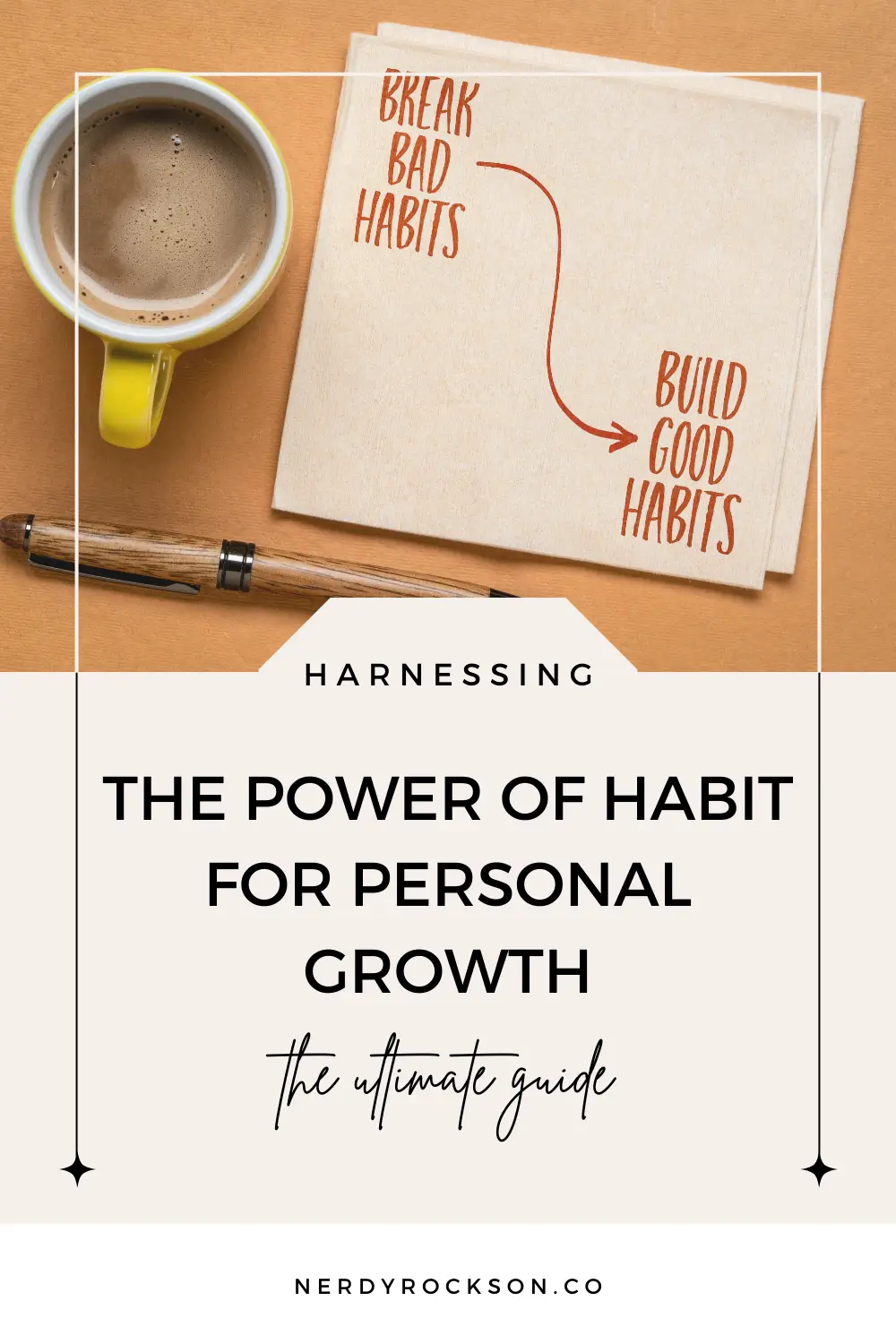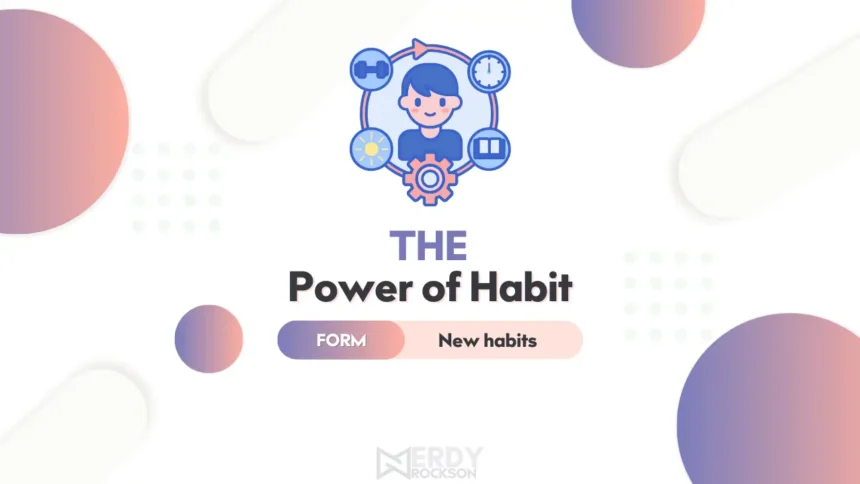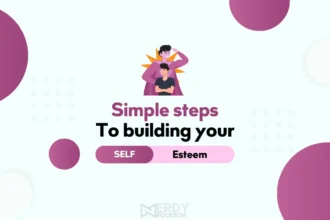Let’s dive headfirst into the world of habits. You might be wondering, how much impact do these trivial daily routines even have on us? The simple answer is a lot. Habits are powerful entities that can drastically alter the course of our lives. While habits often fly under the radar, slipping into the automatic parts of our day, they can be harnessed to bring about personal growth and transformation.
When you sit down to consider it, you’ll realize that almost all your daily activities are habits. You probably wake up around the same time, brush your teeth in the same order, take nearly the same route to work, and even eat similar meals day to day. These habits form a substantial part of your daily life. But don’t be fooled into trivializing them. For something so small and routine, habits have tremendous power.
In this article, we’ll delve into the science of habits, exploring how they are formed, their impact, and how they can be changed. We will investigate the structure that habits are built on and their inherent power. Because let’s not forget: you are not stuck with your habits. With a little bit of consistency and the right techniques, you can replace detrimental habits with beneficial ones and ultimately utilize them to your advantage.
Get ready to embark on a journey of self-discovery and personal growth. Ready? Let’s get started.
The Science of Habits
Let’s get started with understanding the nitty-gritty – the science behind habits. Do you know that our brain is constantly seeking ways to save effort, and habits are its solution? Yes, the brain switches into autopilot mode to allow us to perform many of our daily activities without thinking.
The hierarchy of information processing in our brain leads to the formation of habits. Here’s how it works: the brain receives information and processes it to understand whether it’s a new scenario or an already known one. If it’s the latter, the brain just follows the established pattern of behavior – the habit.
The process by which habits are formed occurs in three stages, colloquially known as the “habit loop”: cue, routine, and reward. The cue triggers your brain to initiate a behavior. It’s a bit of information that predicts a reward. The routine can be physical, mental, or emotional. It’s an action you perform after the cue. The reward is the end goal of every habit, which tells your brain that the loop is worth remembering for the future.
Charles Duhigg, in his book “The Power of Habit“, sums up it perfectly, “The habit loop is a three-part process that governs any habit.”
In the context of beneficial habits, it’s about creating cues that lead to desired routines and rewarding yourself for completing them. To change an existing bad habit, you need to identify the cue and reward that drive the habit’s routine and then find a new, positive routine to use in response to the cue.
Let’s understand this better with an example. Consider the habit of brushing your teeth before bedtime. The cue could be finishing dinner, the routine is brushing your teeth, and the reward is the fresh, clean feeling in your mouth afterwards. To establish this habit in a child who resists brushing, an additional reward, like a bedtime story after brushing, could strengthen the habit loop.
Understanding the science of habits is empowering, as it equips us with the knowledge to replace detrimental habits with constructive ones, leading to significant personal growth. Once you start observing your habits, you can remold them in a manner that better serves your purpose. But remember, it’s a gradual process that requires consistency, patience, and resilience.
The Power of Habits
You may not discover it, but every day, you are witness to an unseen power at play. A power that shapes your decisions directs your actions, and, in the grander scheme of things, dictates the trajectory of your life. Yes, we are talking about habits.
Habits, as mundane as they might seem, wield an extraordinary influence over us. Let’s delve further to understand how.
The Autopilot Mode: You may have noticed that performing certain tasks doesn’t require much thought or effort. Take brushing your teeth in the morning, for instance. Once the toothpaste is on the brush and the brush is inside your mouth, you zone out, your thoughts wandering while your hand mechanically follows the routine. You do this because you have done it countless times before, and your brain knows the drill. Tasks like these, which we repeat day in and day out, become hardwired in our brains, allowing us to accomplish them on an ‘autopilot mode’, freeing up our cognitive resources for other tasks.
“We are what we repeatedly do. Excellence then, is not an act, but a habit.” – Aristotle
The Domino Effect: Habits, big or small, don’t exist in isolation. They are intertwined, setting off a chain reaction of other behaviors. Ever wondered why making your bed in the morning sets you up well for the day? Or how does one week of regular exercise motivate you to eat healthier? This is the domino effect of habits at play. Creating a positive habit triggers a ripple of other good habits, leading to a cascade of positive change.
Think about habits like invisible threads. Each thread on its own might not seem consequential. But weave them together, and voila! You have a fabric. A fabric that is the sum of your actions and behaviors, your ‘character.’ A fabric that is you.
Reaping Long-Term Benefits: Habits are about the long game. Their effects might not be apparent in the short term, but their power lies in repetition. When good habits are consistently followed over time, they provide compound returns. Think of it like a savings account where the interest is compounded—it’s small increments day by day, but zoom out a year, two years, ten years, and you see a substantial gain.
To realize the power of habits is to reap their benefits. Harness that power, and let it guide you towards personal growth.

The Role of Structure
Picture this: a healthy meal plan, a workout regiment mapped out, or a daily gratitude journal getting dusted daily. It sounds like a great start to adopting healthy habits, doesn’t it? However, if you find them falling apart before they start to stick, it might be time to pay attention to the fundamental role structure plays in forming habits.
Understanding structure in this context is basically about establishing a clear, consistent framework around the habits you wish to cultivate. It’s akin to setting up the scaffolding before you start to renovate your life. And let’s be frank – the climb to a better you is a bit steep without it.
Incorporating structure into your daily routines makes space for your new habits to grow and thrive within a supportive environment. The structure provides a clear roadmap, helping you to streamline your efforts and avoid confusion or randomness. But how do you build this structure? Let’s delve deeper into that.
Creating a Structured Environment
The first step towards creating a structured environment is being aware of your routines and the potential obstacles that can disrupt them. You need to identify where and how these new habits will fit into your existing routine and make specific plans for incorporating them.
Let’s consider an example. If you are trying to cultivate a habit of reading before bed, plan on what time you will start, where you will read, and for how long. Having a structure will help reduce the tendency to dismiss the task because it’s not a defined part of your routine.
Embracing Regularity and Routine
Having a defined routine is not about being rigid. It’s about recognizing the interplay between habit and environment. Your environment significantly influences how you act and react. By establishing regular routines, you are creating an environment that is not just habit-friendly but also habit-forming.
Remember, the power of structure in habit formation can’t be underestimated. It is an essential tool for personal growth and a sturdy foundation on which you can build your tower of new, beneficial habits.
Cultivating Beneficial Habits
Forming beneficial habits is akin to planting a seed. With careful nurturing, a sprout breaks through the soil, grows, flourishes, and bears the fruit of success. However, the process is not as simple as throwing a seed in the soil and waiting for a tree to sprout. There’s careful preparation, consistent nurturing, and patient understanding involved.
The first step to cultivating beneficial habits is awareness. All too often, our habits go unnoticed. They’re just things we do, often mindlessly. Begin by consciously recognizing what you do throughout your day. Make a list, and take note of the recurring patterns in your behavior and the impact they have on your life.
- Do they add value to your life?
- Do they help you inch closer toward your goals?
- Do they empower you, or do they drag you down?
As you sift through your actions, you’ll identify the habits you’d like to change, replace, or refine. This process isn’t about criticizing what you’re doing wrong but about recognizing where there’s room for growth.
Choosing the Right Habits
Once you’ve identified the habits you would like to replace, it’s time to consider the new practices that would serve you better. Aim to target habits that align with your values and your goals.
- If your goal is to write a book, perhaps a writing habit is what you need.
- If your goal is to lead a healthier lifestyle, maybe it’s the habit of daily exercise or mindful eating.
- If you yearn for peace of mind, a meditation habit might do the trick.
The habits you choose to cultivate should resonate with who you wish to become — your aspiration. They must feel intrinsically rewarding, not burdensome or enforced.
Nurturing Your New Habits
Planting the seed of a new habit isn’t enough; it needs to be nurtured consistently. This is where the importance of structure, regularity, and environment comes in.
Start small. Few things can scuttle the formation of a new habit, like biting off more than you can chew. Set achievable milestones. And remember, the aim is progress, not perfection.
“We are what we repeatedly do. Excellence, then, is not an act, but a habit.” – Aristotle
Remember that patience is key. The growth of a seed cannot be rushed, and neither can the development of a new habit. Prepare yourself for the plateaus and valleys as much as the peaks. In time, the reinforcement loop will get more robust, and you are more likely to see tangible progress.
Cultivating beneficial habits is a process of growth, not unlike the journey of a sprout becoming a tree. It’s a powerful path to personal development, one day, one action at a time.

Identifying and Overcoming Bad Habits
Often, to make way for beneficial habits, you’ll first need to confront and address those that are holding you back. Remember, habits are not inherently good or bad; it’s their impact on our lives that categorizes them so. But how do we truly recognize a bad habit? And once we do, what’s the next step?
Identifying bad habits is a process of self-reflection. You need to observe your daily routines, your responses to varying situations, and your coping strategies. An easy way to track these could be to maintain a daily journal. Listing down barriers to your goals can also help pinpoint counterproductive habits. For instance, if your aim is to lead a healthy lifestyle but you find yourself reaching for unhealthy snacks regularly, there you have a habit needing attention.
Once you’ve identified a bad habit, understanding its roots is key. Most bad habits are born from stress and boredom. Your bad habit could be a temporary escape from these issues, but in the long run, it’s not solving the problem. Identifying the underlying cause can help you devise an effective strategy to overcome it.
Next comes replacing bad habits. Habits cannot simply be erased; they need to be replaced with positive ones. This is because they result from identified cues and held rewards. Therefore, aim for substitution, not elimination. If you find that stress leads you to delve into unhealthy eating habits, for example, try substituting it with a healthier coping mechanism like yoga or meditation.
Remember, overcoming bad habits can be a challenging process, filled with occasional slips and setbacks. Don’t view these as failures but rather as opportunities for learning and growth. Be patient with yourself; success is a journey, not a destination.
Overcoming Bad Habits: Strategies and Tips
Here are a few strategies and tips to help you navigate the journey of breaking bad habits:
- Start small: Large goals may become overwhelming. Instead, break them down into smaller achievable tasks to make the process manageable.
- Recognize triggers: Identifying what prompts your bad habits is crucial – it’s your first step towards changing them.
- Visualize success: Positively visualizing your life without the bad habits can serve as a powerful motivator in your journey.
- Plan rewards: Rewarding yourself upon reaching milestones can boost your motivation and make the change process enjoyable.
All the best on your journey to transform your life by overcoming bad habits. Remember, the power to change lies within you, and you’re not alone in your quest for personal growth and fulfillment.
The key Role of Consistency
Your habits, no matter how beneficial, won’t hold lasting power without consistency. Consistency, the act of doing something over and over again, whether daily, weekly, or monthly, strengthens your habits. You’ve likely heard the saying, “Consistency is key,” and when it comes to habits, it holds more truth than you can imagine.
The brain, in its endless desire for efficiency, starts to automate actions done consistently. Skateboarding, typing, even brushing your teeth—all acts that once seemed intricate, become automatic over time. As you continue to persist with your beneficial habits, your brain gradually reduces the mental power needed to perform them. This incredible brain function implies that habits formed and consistently adhered to soon feel routine and easy to accomplish.
“We are what we repeatedly do. Excellence, then, is not an act, but a habit.” – Aristotle
However, developing consistency can also be quite challenging. You may have noticed how it’s easier to keep up with certain habits than others. It could be because the reward is immediate, like the euphoria after a run, or because it’s a socially shared habit like having a coffee first thing in the morning. For beneficial habits with delayed rewards, like studying regularly or maintaining a balanced diet, the secret to consistency lies in finding immediate positive reinforcements while the long-term effects take shape.
- Consider rewarding yourself after completing your habit. A small treat or personal time can serve as a compelling incentive.
- Record your progress. Having a visual record of your must-dos and achievements can be a great source of motivation.
- Publicly sharing your goals for accountability can help you stick to them. When you make your intentions public, you’re more likely to stick to your plans to avoid letting others down.
Being consistent requires commitment, flexibility, and patience. Bear in mind that unforeseen circumstances might disrupt your routine. In such cases, don’t let perfectionism become the enemy of good. If you miss a day or two, it’s vital to get back on track as quickly as possible without beating yourself up.
Rome wasn’t built in a day. It’s cliché, but it emphasizes the key role consistency plays in the establishment of powerful habits and eventual personal growth. So remember, hold steadfast to your beneficial habits and nourish them with the power of consistency.
The Intersection of Habit and Consistency
When it comes to personal growth and success, the union of habit and consistency is like the meeting of two superpowers. One gives you the toolset you need to succeed, while the other ensures the right tools are used consistently to maximize results. And like any dynamic duo, the potency of their combined effect is stellar and often the secret sauce to outstanding success.
Overcoming Challenges
Navigating through the journey of creating and maintaining new habits can often present a series of unexpected obstacles. Going through such trials is absolutely normal and it’s essential for you to remember that each challenge you face is an opportunity for further growth.
Now, let’s explore common issues that may arise during this journey and provide practical tips on how to overcome them.
Tackling Resistance to Change
Resistance to change might be the first obstacle you’ll encounter. Our brains are hardwired to take the path of least resistance, meaning when offered a choice between something familiar and something new, your brain naturally veers towards what’s familiar.
An effective way to deal with this resistance is by starting small. Create goals that are manageable and not daunting. The satisfaction you derive from accomplishing these smaller goals motivates you to progress to larger ones.
Combatting Procrastination and Lack of Motivation
Procrastination and lack of motivation can also serve as major impediments in your journey of habit formation. It’s crucial to understand that motivation is not always a prerequisite for action. In fact, action often begets motivation.
When you start to procrastinate or feel your motivation waning, apply the “2 Minute Rule”. If the new habit you’re working towards developing can be done within 2 minutes, then do it immediately. This method helps build momentum, and before you know it, you’ll be diving into tasks you would have otherwise procrastinated on.
Overcoming Habit Slips and Lapses
A slip or lapse, meaning a brief return to previous behavior, can often dent your confidence and commitment to change. But you should perceive these minor setbacks as exactly what they are—minor. Don’t be too hard on yourself! The path to personal growth is not a straight line. There will be bumps and detours along the way, but with patience and consistency, progress is inevitable.
Remember, resilience is not about how many times you fall but how quickly you get back up. It’s more useful to focus on recovery speed rather than perfection. Use any shortcoming as a lesson learned and an opportunity to adjust your course towards success.
Breaking Free from Limiting Patterns
Many of us are trapped in negative or limiting patterns that obstruct our growth and happiness. Breaking free of these patterns necessitates understanding their roots, identifying the triggers, and gradually replacing them with healthier habits. Freedom from limiting patterns is not an overnight event, but the journey is one of profound personal growth and enhanced well-being.
- Understanding the Origin: Limiting patterns often originate from previous experiences or beliefs, and as a way to cope, we develop certain habits unconsciously. By recognizing and understanding these origins, we can defuse their power over us.
- Identifying the Triggers: Triggers are circumstances or events that spark our limiting patterns. Once we identify these triggers, we can consciously avoid them or prepare ourselves to respond in a healthier way when they occur.
- Replacing with Healthier Habits: The antithesis of limiting patterns are empowering habits. It’s about replacing the old pattern with a new, beneficial one. This takes time and consistency, so don’t get discouraged if you don’t see immediate results.
Breaking free from limiting patterns can often feel like a tug of war. The key is to exercise patience, consistency, and self-compassion. Remember, it’s important to celebrate small victories along the way.
Facing Resistance in the Transformation Process
You’re likely to encounter resistance when you embark on this transformation journey. This is because our minds naturally resist change, especially when it involves breaking years of ingrained patterns. Recognize this resistance for what it is – a sign that you’re pushing your boundaries and growing. It’s essential, therefore, not only to push through this resistance but to use it as a catalyst for change.
“Progress lies not in enhancing what is, but in advancing toward what will be.” – Khalil Gibran
At the end of the day, breaking free from limiting patterns is truly about creating a life you love living. And forming new, beneficial habits is the key to unlocking this potential. You have the power to shape your life. When you learn to let go of limiting patterns, you’ll find yourself not just surviving but thriving.
Benefits of forming new habits.
Establishing new habits provides countless advantages that can ultimately boost your personal growth and overall well-being. Let’s delve into the many benefits of integrating beneficial habits into your day-to-day life.
Skill Enhancement: Cultivating new habits often involves the acquisition of new skills or the improvement of existing ones. For example, adopting a habit of reading every day can improve your vocabulary and cognitive skills. Meanwhile, integrating regular exercise into your routine can enhance your physical abilities.
Mental Health Improvement: Good habits can dramatically improve your mental health. For example, daily habits like meditation, yoga, or even maintaining a gratitude journal can reduce stress, promote mindfulness, and contribute to an overall sense of happiness and contentment.
| Habit | Potential Benefit |
|---|---|
| Meditation | Reduces stress and promotes overall mental balance |
| Gratitude Journaling | Fosters a positive mindset and increases happiness |
Goal Achievement: Beneficial habits align with your long-term goals and make them more achievable. By breaking down larger goals into smaller daily actions (habits), you progress each day toward goal accomplishment. This strategic approach mitigates feeling overwhelmed and also boosts your motivation to stay consistent.
Boost in Self-Esteem: By committing to new habits and consistently seeing progress, an increase in self-esteem often follows. Successfully integrating good habits into your life validates your ability to commit and achieve, strengthening self-belief and confidence.
Note: To reap these benefits, it’s important to remember that patience, consistency, and repetition are key. Forming a new habit doesn’t happen overnight; it’s an ongoing journey of growth and perseverance.
As we’ve discussed, adopting new habits can powerfully impact your life, help chart your path to personal growth, and lead you toward becoming the best version of yourself. And remember, this journey, while challenging at times, will likely prove highly rewarding in the end. So, embrace it with an open mind and a devoted heart.
Conclusion
Indeed, habits hold an immense power over us, dictating the cadence and quality of our day-to-day lives. They can unknowingly drive our behaviors, both good and bad. But through heightened awareness and a commitment to change, we can leverage this power and craft our behaviors to forge a lifestyle that fosters personal growth and achievement.
The journey of reshaping habits isn’t without its fair share of obstacles. Resistance to change, procrastination, lack of motivation, and occasional habit lapses are all part of the game. The key is to keep moving forward despite these hurdles. Remember, even small steps count on the road to habit change. In the clever words of Will Durant, inspired by Aristotle, “We are what we repeatedly do. Excellence is not an act, but a habit.”
Through consistent efforts, where we aim at maintaining a structured environment and cultivating beneficial habits, we are propagation of the right habits. Consistency, routines, and structures act as much-needed anchors in an ocean of uncertainty. They guide and enable us to stay the course, bringing us closer to our desired outcomes.
Creating new habits is a leap towards personal growth. Change starts with small steps, consistently taken over time.
Taking the leap towards personal growth through habit change may seem daunting initially. There will be ups and downs. But courage isn’t the absence of fear. It’s the ability to press on despite it.
So, are you ready to leverage the power of habits and jumpstart your journey towards personal growth?










